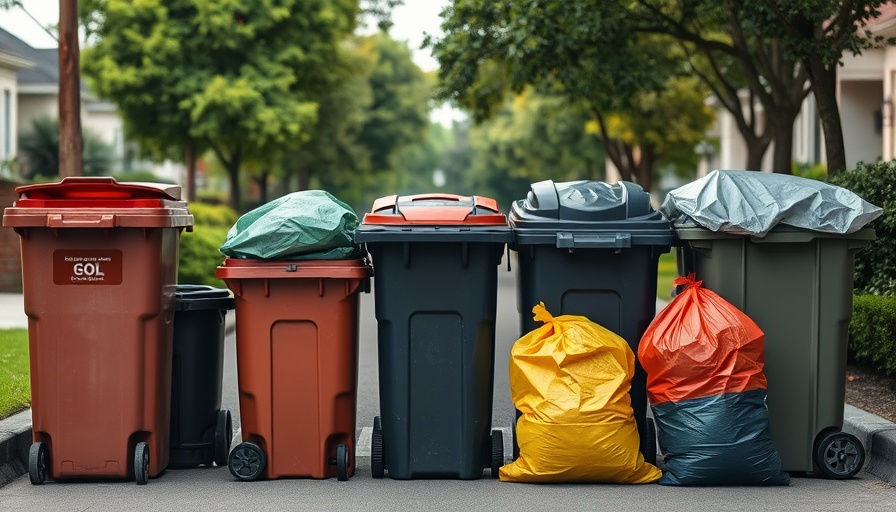
Understanding Curbside Trash Pickup: Essential Guidelines
As homeowners and renters alike prepare to declutter their living spaces, knowing what items are permitted for curbside trash pickup becomes essential. This knowledge not only streamlines the waste disposal process but also ensures that residents abide by local regulations, which can vary widely depending on the area.
What Can You Put Out for Trash Pickup?
In many urban and suburban areas, including California, certain items are generally acceptable for curbside pickup. Common household waste, including kitchen scraps, packaging, and conventional trash in sealed bags, is typically cleared for disposal. For instance, recyclable materials often include clean paper, plastic containers categorized with recycling symbols 1 or 2, and glass bottles, all of which make up a sizeable portion of waste.
Yard waste, another backyard commonality, such as grass clippings, leaves, and branches, is usually included as well. Many municipalities, particularly California urban areas, recommend that branches be under a specific size—commonly 6 inches in diameter and cut to 4 feet or less for easier handling.
California-Specific Curbside Pickup Regulations
In California, guidelines for what can be put out for curbside pickup are established by local waste management services. For example, bulk items like furniture, mattresses, and appliances may be accepted, but residents should always check with their local haulers. In particular, areas like Los Angeles have strict rules for large items, which often require advance scheduling for collection.
Experts suggest contacting your local waste management department to clarify any ambiguous items—keeping in mind that in agricultural regions of the state, the definitions may slightly differ due to the variances in local waste management practices.
Items You Should Never Place in Curbside Pickup
Understanding what you can AND cannot throw curbside is crucial. The list of items not accepted is often much longer, ranging from hazardous materials like paints and pesticides, to more common household items that could pose risks if improperly discarded.
Each region's guidelines suggest that hazardous waste—including chemicals, motor oil, and certain batteries—must be properly disposed of at designated facilities. Moreover, construction debris, such as concrete, appliances, or large pieces of lumber, is generally prohibited in curbside pickups and requires special handling.
Community Impact of Proper Waste Disposal
Improper disposal of certain items can lead not only to fines for homeowners but can also negatively impact local ecosystems and communities. Hazardous materials improperly disposed of in curbside trash can leach into groundwater or pollute neighborhoods. Understanding what can and cannot be discarded helps protect your community and the environment.
Tips for Responsible Waste Management
To ensure that you are complying with local waste management guidelines, here are some practical tips to keep in mind:
- Research Local Rules: Always check the guidelines provided by your local waste management service for the most accurate information.
- Separate Materials: Keep recycling separate from regular trash, as many recycling programs emphasize that cleanliness is essential.
- Schedule Bulk Pickups: Contact your waste provider ahead of time to arrange bulk pickup for larger items.
- Consider Donation: If an item is in good condition, explore options for donating instead of discarding.
- Utilize Recycling Facilities: Take hazardous and bulky waste to the right facilities for safe disposal.
Final Thoughts on Curbside Pickup
Understanding the do's and don'ts of curbside trash pickup is essential for maintaining clean neighborhoods and ensuring community health. If you're in California or any other location, familiarize yourself with your local regulations and encourage others to do the same. This commitment to responsible waste disposal can significantly benefit our environment.
 Add Row
Add Row  Add
Add 




Write A Comment